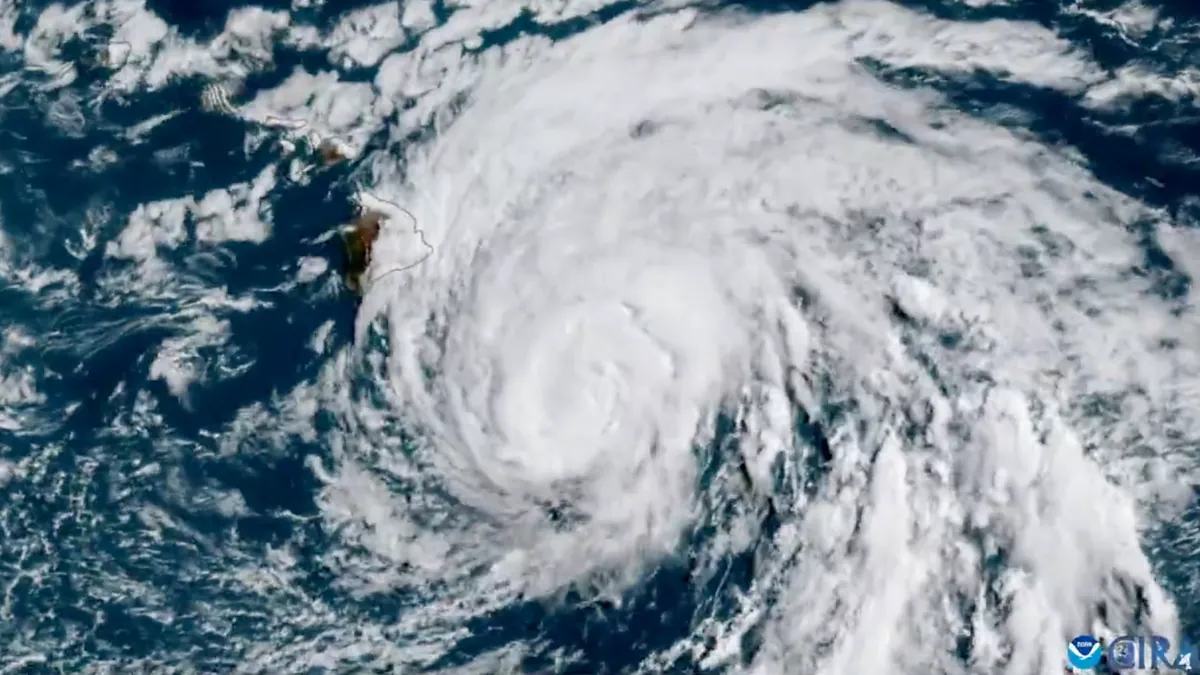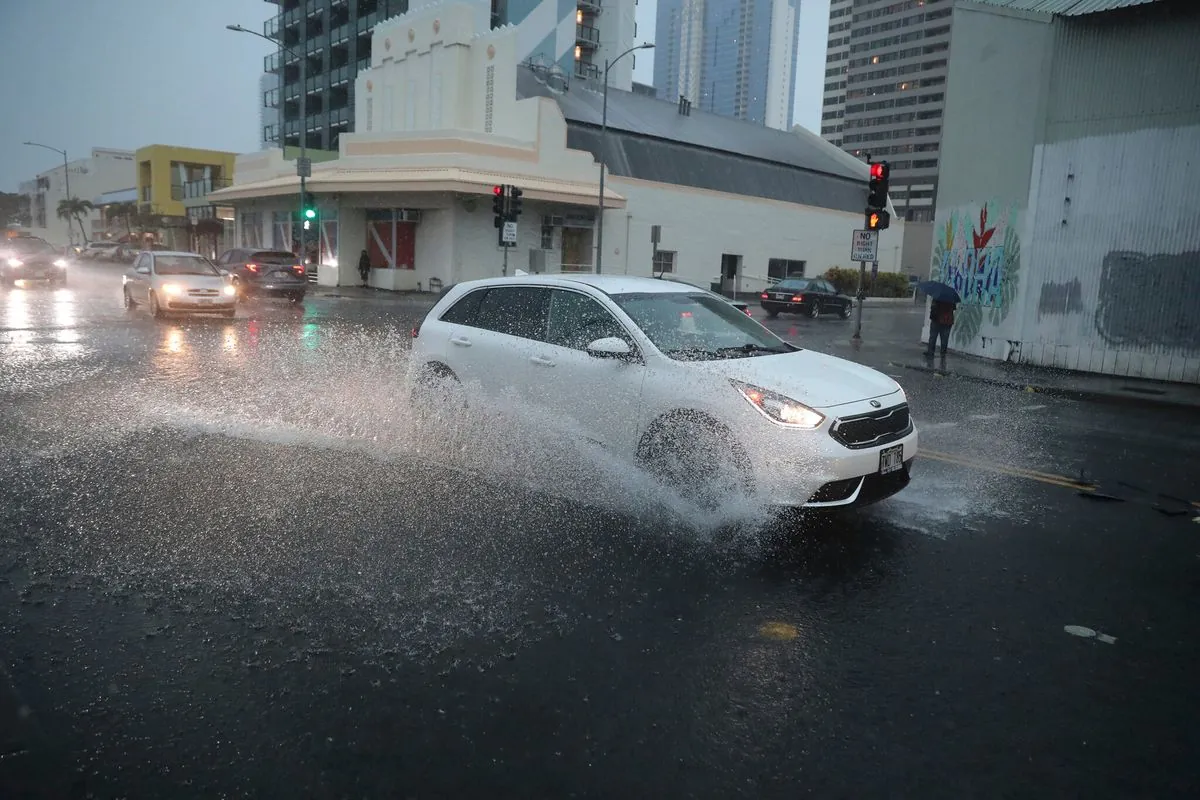Tropical Storm Hone Passes Hawaii, Bringing Rain and Flood Concerns
Tropical Storm Hone moves past Hawaii, causing rainfall and flooding on the Big Island. Meanwhile, Tropical Storm Hector and Hurricane Gilma churn in the Pacific, with authorities monitoring their progress.

As of August 26, 2024, Tropical Storm Hone has been moving past Hawaii's main islands, bringing significant rainfall and flooding concerns. The storm, which weakened from hurricane status on August 25, has primarily affected the Big Island with heavy precipitation.
William Ahue, a forecaster at the Central Pacific Hurricane Center in Honolulu, reported that Hone's main impacts included rainfall and flash floods, resulting in road closures, downed power lines, and tree damage in certain areas. The storm's name, which means "sweet and soft" in Hawaiian, belies its potential for disruption.

Hone's passage has highlighted Hawaii's unique geographical and climatological characteristics. As the only U.S. state located in Oceania, Hawaii comprises 137 islands stretching across 1,500 miles in the Pacific Ocean. The state's tropical climate, with year-round temperatures averaging 75-85°F (24-29°C), makes it particularly susceptible to tropical storm systems.
While the storm has caused inconvenience, some residents view it as a mixed blessing. Julia Neal, owner of a bed-and-breakfast on the Big Island, noted that despite experiencing tropical storm winds and heavy rain, Hone has provided relief from ongoing drought conditions. This perspective underscores Hawaii's complex relationship with weather patterns, balancing the need for water resources against the risks of severe weather events.
The storm's impact on Hawaii's agricultural sector, particularly its coffee industry, remains to be seen. As the only U.S. state where coffee is grown commercially, along with vanilla beans, the additional rainfall could potentially benefit crops that have been struggling with drought conditions.
Meanwhile, authorities are monitoring other weather systems in the Pacific. Tropical Storm Hector has been gaining strength far from Hawaii's shores, while Hurricane Gilma, located about 1,220 miles east of Hilo as of August 26, is expected to weaken considerably before approaching the islands.
The passage of Hone has inevitably drawn comparisons to the tragic events of August 8, 2023, when a devastating wildfire fueled by hurricane-force winds struck Lahaina, Maui. That disaster, which occurred 1 year and 18 days ago, resulted in 102 fatalities, making it the deadliest U.S. wildfire in over a century.
In response to Hone, local authorities implemented precautionary measures. Mitch Roth, Hawaii County Mayor, announced the opening of shelters and the closure of beach parks on the eastern side of the Big Island due to dangerously high surf conditions.
Hawaii's power companies, Hawaiian Electric and the Kauai Island Utility Cooperative, were prepared to implement power shutoffs if necessary to mitigate fire risks. However, as Hone passed the islands, these safety measures were deemed unnecessary.
As Hawaii navigates the challenges posed by Tropical Storm Hone, it serves as a reminder of the state's unique position as the most isolated population center on Earth. With its diverse ecosystem home to numerous endemic species and its cultural richness reflected in its two official languages, English and Hawaiian, the islands continue to balance the beauty and risks of their tropical paradise.


































